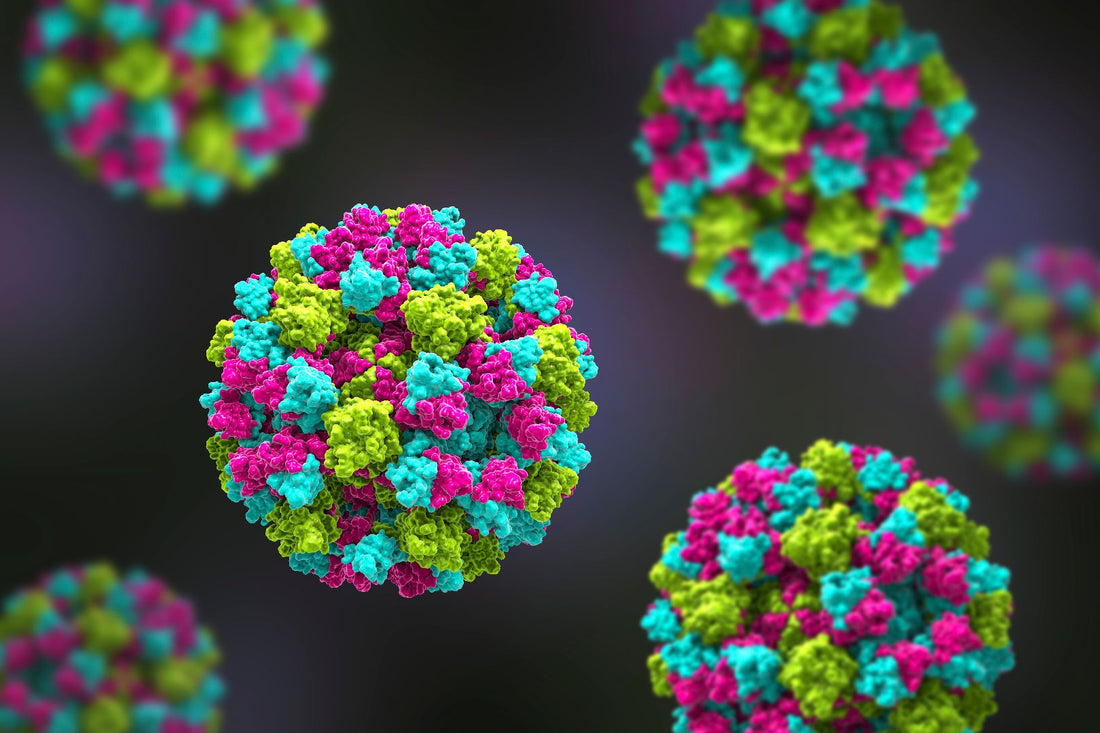Author: Anne Kuijper
Read time: 4 minutes
Nearly 20% of the world’s population suffers stomach problems on the toilet due to norovirus. This suffering is known as acute gastroenteritis, which you may have experienced as diarrhea, vomiting nausea, fever, or abdominal pain. As you may know, it isn’t pretty. Now imagine, you recently had a transplant surgery. You are over the moon! You finally got that organ you desperately needed. But then the stomach aches start, the constant diarrhea, and the nausea. The medications you need to take, to keep the organ that saved you from certain death, have a serious side effect. Your body has a hard time kicking norovirus out. The result is you developing chronic diarrheal syndrome, which can have quite an impact on your quality of life.

Not only does it negatively influence the quality of life of transplant patients, but it can also be the cause of their untimely demise. In extreme cases, a norovirus infection can lead to the rejection of the transplanted organ and that can bring death around the corner. So, Mr. White, how does it work? Why can norovirus be so severe in transplant patients?
When someone has gotten a transplanted organ, they need to take immunosuppressive drugs to keep the immune system under control. If you don’t take these drugs, the chances of your body rejecting that brand new organ, are way higher. Of course, for a transplant surgery the most perfect match is found. However, nobody is quite the same, and your own immune system will recognize that that new organ isn’t originally yours. And because it’s strange and new, it will reject it. It could be dangerous after all!
Sadly, these drugs don’t only suppress the immune system from kicking your beloved organ out, it also makes it easier for infectious diseases to get comfortable in your body. Like norovirus. Yet, the drugs are not entirely at fault here. Norovirus is very creative as Mr. Black would describe it. It constantly evolves, creating new versions of itself, dodging the immune systems attacks at every turn.
Norovirus treatment
These immune dodging skills of norovirus are the reason why no vaccine is available for the infection. In immunocompetent people, who have a healthy ‘good’ immune system, the body eventually clears the virus itself and moves on. Yet, if transplant patients’ bodies cannot do this, what kind of treatments can be used to help?
In many cases, loading the body up with fluids and electrolytes will resolve the infection, explains Mr. White. Replenishing fluids is also recommended for everyone infected with norovirus, as diarrhea and vomiting can cause dehydration.
In others, lowering the number of immunosuppressive drugs will help as well. Yet, when the serious chronic diarrhea stage is reached, additional drugs and treatments are considered that might help. Still, no actual approved treatment options exist.
Interestingly, because transplant patients have such difficulty removing the virus from their body, they serve as a kind of reservoir for new norovirus variants. These new variants will not be recognized by the immune system of somebody who has had norovirus before.
Norovirus outbreaks
New variants keep outbreaks of norovirus ongoing. Each year, in the US alone, there are approximately 2,500 norovirus outbreaks announced.
But how do you get norovirus? That is Mr. Blacks territory of expertise. Norovirus spreads via what is called the fecal-oral route. Fecal means that the virus particles leave your body when you poop. Oral means that they enter your body via your mouth.
Of course, people are not directly eating feces. However, foods and drinks can be contaminated with norovirus through contaminated water for example. Objects, surfaces or people can be contaminated through touch as well.
Less than ten virus particles are needed to infect someone. That is very little. These virus particles are very stable outside of the body and can stay infectious for 2 weeks on surfaces and more than 2 months in water!
Beside the fecal-oral route, norovirus can also be transmitted when someone vomits. Or through the small droplets, aerosols, that are produced.
Norovirus symptoms
As mentioned before, common symptoms include diarrhea, nausea, vomiting, and abdominal cramping also referred to as stomach pain. In addition, about 37 to 45% of people also get a fever.
Incubation period
The incubation period is very short, people generally get symptoms one to two days after getting infected. From then, in the healthy public, with healthy immune systems, typically it takes less than three days to take your leave from the toilet and continue with your life.
How long is norovirus contagious?
While a healthy body can fight norovirus and win quite quickly, you can still spread it around for two weeks after! It can even be longer depending on the person and the circumstances. This why the CDC recommends staying home for two extra days after you feel better. More precautions are:
- Wash your hands often and for at least 20 seconds.
-
Clean surfaces that someone with norovirus came into contact with.
- Preferably with a chlorine bleach solution that has a concentration of 1,000 to 5,000 parts per million (ppm).
- Wash clothes worn during a norovirus infection in hot water.
- Cook food such as shellfish carefully.
- Wash all you fruit and vegetables before eating.
Gameplay guide for Norovirus
In the world of ImmunoWars the boardgame, Mr. Black uses norovirus to infect his opponents. This virus card is quite cheap ATP-wise and adds a lot of dynamic to the game, which is why Mr. Blacks likes it. It has an infectiousness of three and three stars. Therefore, it can easily infect other players when attacking and is very difficult to get rid of!
To cure norovirus in the game, you’ll need to get lucky. You will either need the CRISPR-CAS13 or natural killer cell (or bleach) card. These are the only ones that will save you from a three-star virus infection.
If we are talking about lucky, the herd immunity and spontaneous remission card can also save you if they get pulled!

References
https://www.ncbi.nlm.nih.gov/pmc/articles/PMC8707792/
https://link.springer.com/article/10.1007/s11908-024-00842-y
https://www.cdc.gov/norovirus/about/index.html\
https://www.cdc.gov/norovirus/outbreak-basics/index.html
https://www.ncbi.nlm.nih.gov/pmc/articles/PMC4624335/


